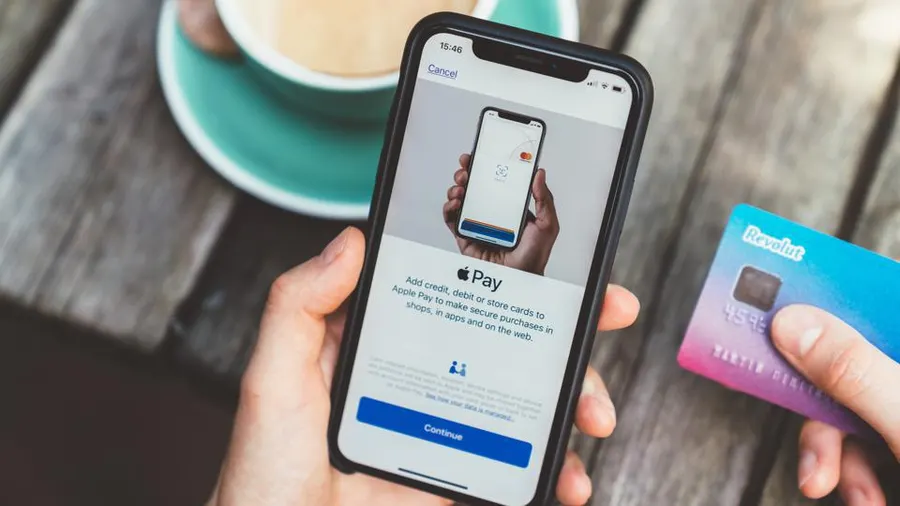Given the explosive growth of Apple Pay in recent years, optimizing your small business to be Apple-friendly can be beneficial. That’s all you need to know, then.
The way we conduct business, how payments are process, and customer behavior have all change so frequently in recent years that it has become the new normal. However, failing to complete a transaction can result in significant losses and long-term issues for firms that accept payments.
Apple has a well-deserved reputation for making devices that sync flawlessly with one another but not with other gadgets. You could therefore understandably be concerned about how Apple’s payment method would function in a similarly close setting.
According to popular belief, Apple Pay works with the majority of payment processors; but, depending on your requirements, setting it up may take more time. For those of you who are wondering how to accept Apple Pay payments, there can be varied responses.
Understanding Apple Pay
Since its 2014 release, the popular digital wallet Apple Pay has gain significant traction as a replacement for conventional credit and debit card payment methods.
Given how profitable the payment processing industry is, it’s hardly surprising that major tech companies have successfully push their way in. Similar to Google Pay and Samsung Pay, Apple Pay is a prime example of this. As is customary with Apple, Apple has innovated to impact the market and transform the way that payments are made.
Apple Pay claims that because their mobile wallet is not physically vulnerable to theft, it is a more dependable and secure payment method. Instead of using debit or credit cards, customers pay with their eye-catching Apple watches, iPhones, iPads, and Mac computers.
Apple Pay security includes tokenization, which substitutes alternative digits for account data to conceal information and stop financial criminals from using it, in addition to minimizing the risk associate with chip cards. Mobile phone security, like a fingerprint or code, is still need for payment to function, making fraud considerably less likely to happen and promoting confidence in commercial dealings for both consumers and companies.
Although these are great advantages, using Apple Pay’s contactless payment method as a client means that you have to rely only on contactless when using your mobile wallet, which might be problematic in some businesses. Many think that this won’t be as big of a problem in the future. They believe that the benefits of Apple’s sophisticated mobile banking system currently exceed the drawbacks because it makes sending and receiving money so simple.
Apple Pay – Accepting Payments
All companies will be considering ways to make sure customers can use their iPhones and Apple watches to pay for goods and services as these payment methods grow more widespread.
The most crucial piece of hardware for a card reader that accepts electronic wallets is near-field communication or NFC technology. This is what gives the gadget the contactless functionality that Apple Pay and other similar systems utilize to request payments.
While not all card readers now in use have them, many do, thus when negotiating a card payment arrangement with a processor, make sure the reader has this feature. Launch in 2021, Epos Now Payments exclusively makes use of gadgets with NFC capabilities and can instantly take contactless payments from Google, Apple, and Samsung e-wallets.
But some of the more establish suppliers won’t automatically offer contactless payment devices, which can result in lengthier wait times, irate consumers, and even keep you out of the e-wallet industry.
Moreover, some older card readers might be equipped with NFC, even though they were installed prior to the introduction of Apple Pay and other similar services. Companies in this situation frequently have to explain the necessity of accepting e-wallet payments to their payment provider. If they haven’t already been released, the majority of payment providers’ software updates may enable the device to begin accepting Apple Pay.
Online Payment via Apple Pay
Businesses must accept as many payment methods as possible for both in-store and online purchases, as both the retail and hospitality sectors continue to see significant levels of online sales.
The procedures you need to take to accept Apple Pay will differ according to your online sales channel, much like with your card machines.
Companies with custom websites will probably be employing a plugin that looks like what businesses with pre-made eCommerce websites use. However, unlike conventional card machines, these businesses will have opted for a less complex online processing agreement when they sign up for their own processing deal.
The majority of online businesses will discover that integrating e-wallet payments into these agreements will be far easier than other PDQ procedures, however there are a few distinct providers. Checking a box or getting confirmation from the vendor about acceptance can be all that is required.
So, if you are having difficulty accepting online payments, checking settings and payments options in your web-builder will likely provide the answers you need.
Epos Now – Adaptable Transaction Software Paired With the Latest POS Tools
Whatever your industry, Epos Now technology can streamline your company’s operations being the most suitable POS System for Small Business. With the introduction of Epos Now Payments, your company may operate on a streamlined system with all hardware parts intended to work in unison.
With partnerships with top software providers across all industries, Epos Now offers amazing integrations for staff and inventory management, marketing, accounting, and much more.




